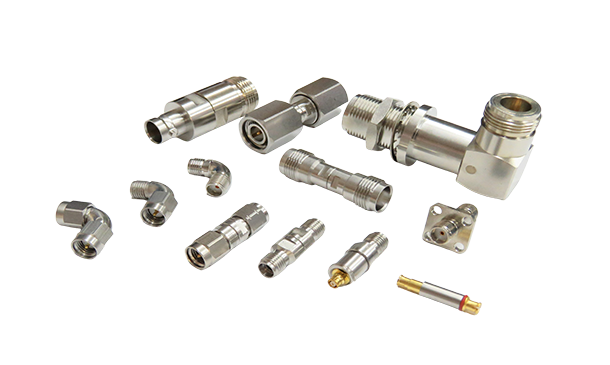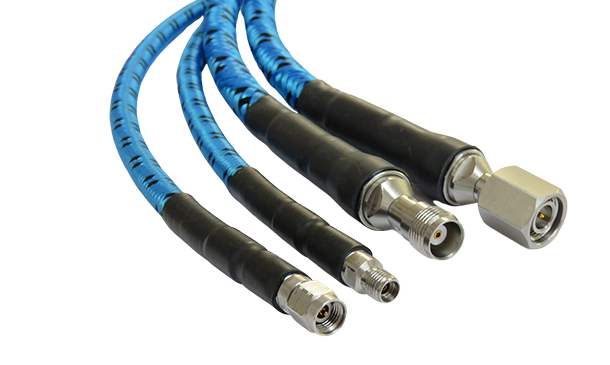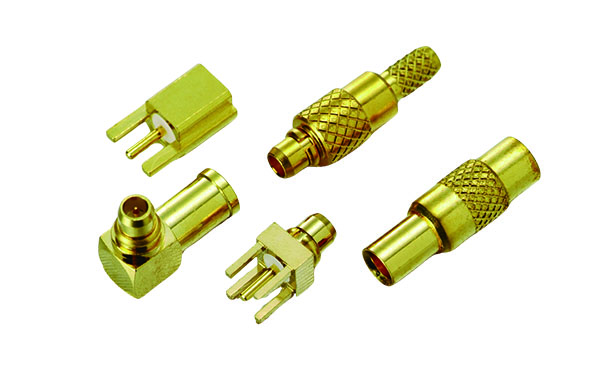- HOME
- Applications
- Blog
- What are RF Connectors?
What are RF Connectors?
24-02-05.jpg)
RF microwave coaxial connectors are the key factor in wireless, satellite and microwave communication systems to ensure the quality of signal transmission. Whether the communication system engineering, high frequency electronic engineering, laboratory test and measurement research organization, or the manufactures of communication equipment, radar systems, satellite receivers, UAV/UAS or drone communications, mobile phones or electronic devices, aerospace industry, medical devices, etc., that you may need to purchase high quality and reliable connectors to ensure the proper functioning of your communication equipment. In this article, we will explain in detail what RF microwave coaxial connectors are. It will also discuss the types of connectors that are suitable for each application, providing you with the most complete connectivity solution!
<Extended reading:Microwave Technology Principles and Applications>
What are RF Connectors?
What are RF connectors? RF Connectors or Microwave Connector is a type of wire and signal transmission connector. It is primarily used at the end of cables that are connected to systems operating in the radio frequency or (Microwave) spectrum. Microwave refers to electromagnetic energy with a frequency greater than 1 gigahertz and a wavelength of less than 30 centimeters, while RF refers to an alternating current. When fed into an antenna, it can generate an electromagnetic field that suitable for wireless broadcasting and communications. (RF Connectors) are commonly used in transmission systems to connect or disconnect system components. They consist of a male connector (Plug) and a female connector (Jack) to form a pair of mating connectors.
< Extended reading: What is mmWave? Advantages, Disadvantages and Applications! >
Common Applications of RF Connectors
RF connectors (Microwave connectors) are designed to transmit signals in the high frequency range, usually in the GHz (gigahertz) frequency range. They are widely used in wireless communications, radar systems, satellite communications, broadband networks and other communications fields. Let us take a look of what are the practical applications of RF connectors (Microwave connectors) in our lives!
<Extended reading: What is high frequency? High Frequency Features and Applications! >
Application of "Short" Frequency Range
Short distance coaxial cables are widely used in home audio-visual equipment and amateur radio devices. Among them, the "Foam Insulated RF Connectors", which are insulated with physically foamed polyethylene material and they are mainly used in the telecommunications industry for a variety of applications. Included in cellular mobile communication systems, microwave communication systems, short-wave national defense systems, broadband networks, and mobile radio systems of land.
<Extended reading: Explore BMA Connectors and Applications in Microwave Technology>
Application of "Long" Frequency Range
Long distance RF Connectors are often used as "TV signal lines" in radio or TV station networks. These coaxial cables are characterized by relatively low cost and a well-established infrastructure. They are also widely used in radio and television broadcasting stations, FM broadcasting in tunnels, commercial mobile services, dedicated communications services, and wireless coverage in large buildings and basements. For instance, airports, parks, highway tunnels, railroad tunnels, and rail transit signaling systems.
<Extended reading: Understanding Hermetic Sealing Technology and Hermetic Connectors in RF Applications>
RF Connector Series Introduction
RF Connectors (Microwave connectors) are commonly known as "connectors". They are the important components used for signal transmission. The following section focuses on a few commonly used of RF Connectors (Microwave connectors). With basic visual identification, electrical characteristics, and corresponding applications for certain connector series.
<Extended reading: SMA Connectors - The Most Common RF Connectors >
Sheet of RF Connectors
| Series | Frequency | Appearance | Mating Style | Applications |
|---|---|---|---|---|
| SMA | DC – 18 GHz DC – 27 GHz |
Jack: Thread Plug: Coupling Nut With 1/4-36 UNS-2A/2B screw threads. |
Threaded Connection (Screw-on Coupling) |
|
| MCX | DC – 6 GHz | The Plug side has the appearance of six slot. | Snap on Coupling |
|
| MMCX | DC – 6 GHz | The Plug side is a miniature C-clip which is smaller than MCX connector. | Snap on Coupling |
|
| N | DC – 18 GHz | Jack: Thread Plug: Coupling Nut With 5/8-24 UNEF-2A/2B screw threads. |
Threaded Connection(Screw-on Coupling) |
|
| SMP | DC – 40 GHz | The Jack side has the appearance of four slot. | Snap on CouplingSlide on Coupling |
|
| SSMP | DC– 65 GHz | Straight Plug Type of Connector | Snap on CouplingSlide on Coupling |
|
| TNC | DC– 18GHz | Jack: Thread Plug: Coupling Nut With 7/16-28 UNEF-2A/2B screw threads. |
Threaded Connection (Screw-on Coupling) |
|
| BMA | DC– 22 GHz | Jack: Spring Fingers Plug: O-Ring |
Slide on Coupling |
|
| 3.5 mm | DC– 34 GHz | With 1/4-36 UNS-2A/2B screw threads. | Threaded Connection (Screw-on Coupling) |
|
| 2.92mm | DC– 40 GHz | With 1/4-36 UNS-2A/2B screw threads. | Threaded Connection (Screw-on Coupling) |
|
| 2.4mm | DC– 50 GHz | With M7x0.75 screw threads. | Threaded Connection (Screw-on Coupling) |
|
| 1.85mm | DC– 67 GHz | With M7x0.75 screw threads. | Threaded Connection (Screw-on Coupling) |
|
<Extended reading: 2.92mm Connectors -The High Frequency Applications for Microwave Field >
Conclusion
Huang Liang Technologies is committed to providing low insertion loss and good performance of VSWR for the connectors. It means our RF Connectors are able to transmit RF signals efficiently and ensure high quality signal transmission. This is especially important for high-frequency applications in 5G/6G communication equipment, radar systems, satellite receivers, UAV/UAS or drone communications, high-frequency electronic engineering design, laboratory test and measurement, cellular or electronic devices, aerospace industry, medical devices, and other products. No matter what your communication application is, we will provide you with a full range of one-stop services, including: initial design, simulation, and the assembly instruction. We also provide performance analysis, to give you with the best solution. Please click “Contact Us” that you can get professional simulation advice before mass production, which will help you realize the competitive advantage of signal stability and also reduce signal loss of commercial communications.
<Extended reading: Explore BMA Connectors and Applications in Microwave Technology >
<Extended reading: SSMP Connectors: Specifications, Advantages, and Types >




